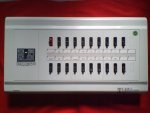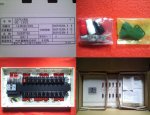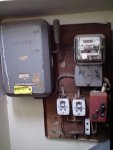Jeff Horton
Member
- Messages
- 4,272
- Location
- The Heart of Dixie
The only thing I see wrong with Stu's panel is that it is not enclosed (I am assuming). You could stick your finger into a live circuit. If it is covered and knowing Stu, it normally is. I don't see any thing dangerous about it. It just looks unconventional.










